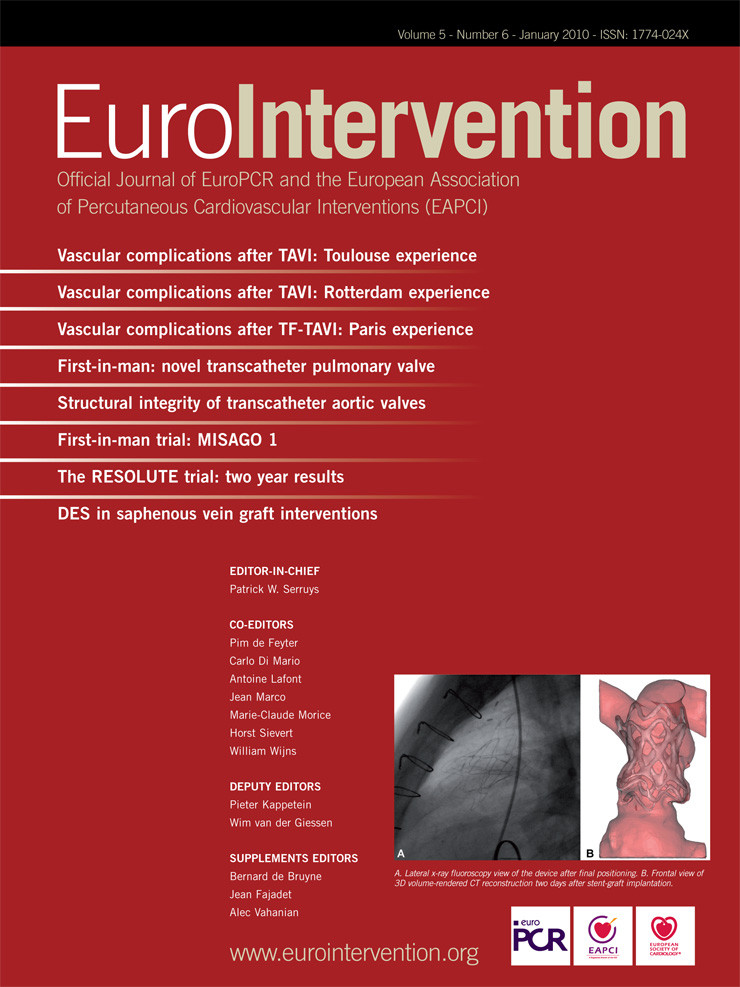This is an image of a 52 year old man with a past history of CABG and multiple PCIs in 2000 and 2008. During the most recent diagnostic catheterisation LIMA to Lad and LCX stent were patent. The patient denied having interrupted dual antiplatelet therapy with aspirin and plavix. He presented to his cardiologist with recurrent chest pain and positive cardiac enzymes. Angiography revealed a patent SVG to OM stent, and an occlusion of the LCX NIR Advance bare metal stent which had been placed nine years previously (Figure 1A).
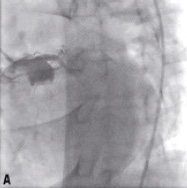
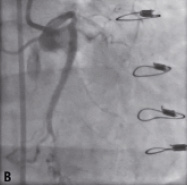
Figure 1. A. Late stent thrombosis of the NIR stent in LCX. B. Angiographic result after Xience Prime stent placement.
The Pilot 50 wire crossed the lesion easily. Thrombectomy was performed and a large amount of red thrombus was aspirated (Figure 2).
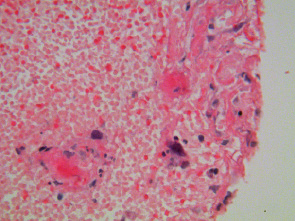
Figure 2. Histology H+E showing pro-inflammatory cells.
Optical frequency domain imaging (OFDI) with the C7XR (LightLab Imaging Inc., Westford, MA, USA ) system revealed large amounts of soft material within the stent (Figure 3A). After predilation with a 2.0x15 mm Voyager balloon (Abbott), the lesion was stented with a 3.0x33 mm Xience Prime stent (Abbott Laboratories. Abbott Park, Il, USA) with good final angiographic results (Figure 1B). OFDI performed after stent placement showed good apposition and no edge dissection with minimal tissue prolapse (Figure 3 B, C, D).
This case illustrates the point that any permanent metallic platform endovascular device carries an indefinite risk of stent thrombosis despite dual antiplatelet therapy with its associated mortality and morbidity. The ultimate solution to this problem may be universal adoption of the fully biodegradable scaffolding device, otherwise know as vascular restoration therapy (VRT) for treatment of obstructive coronary artery disease.
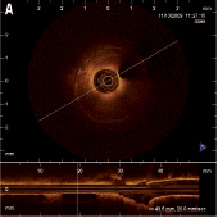
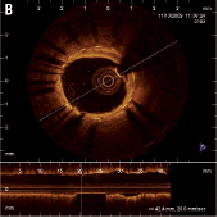
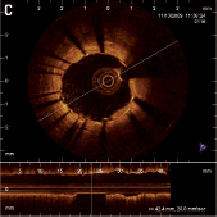
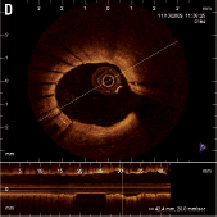
Figure 3. A. OFDI showing soft material filling the lumen of the NIR stent. B. Overlapping of the Xience Prime stent and NIR stent showing good apposition of the Xience Prime stent. C. Mild tissue prolapse. D. OFDI showing good proximal apposition of the Xience Prime stent.
